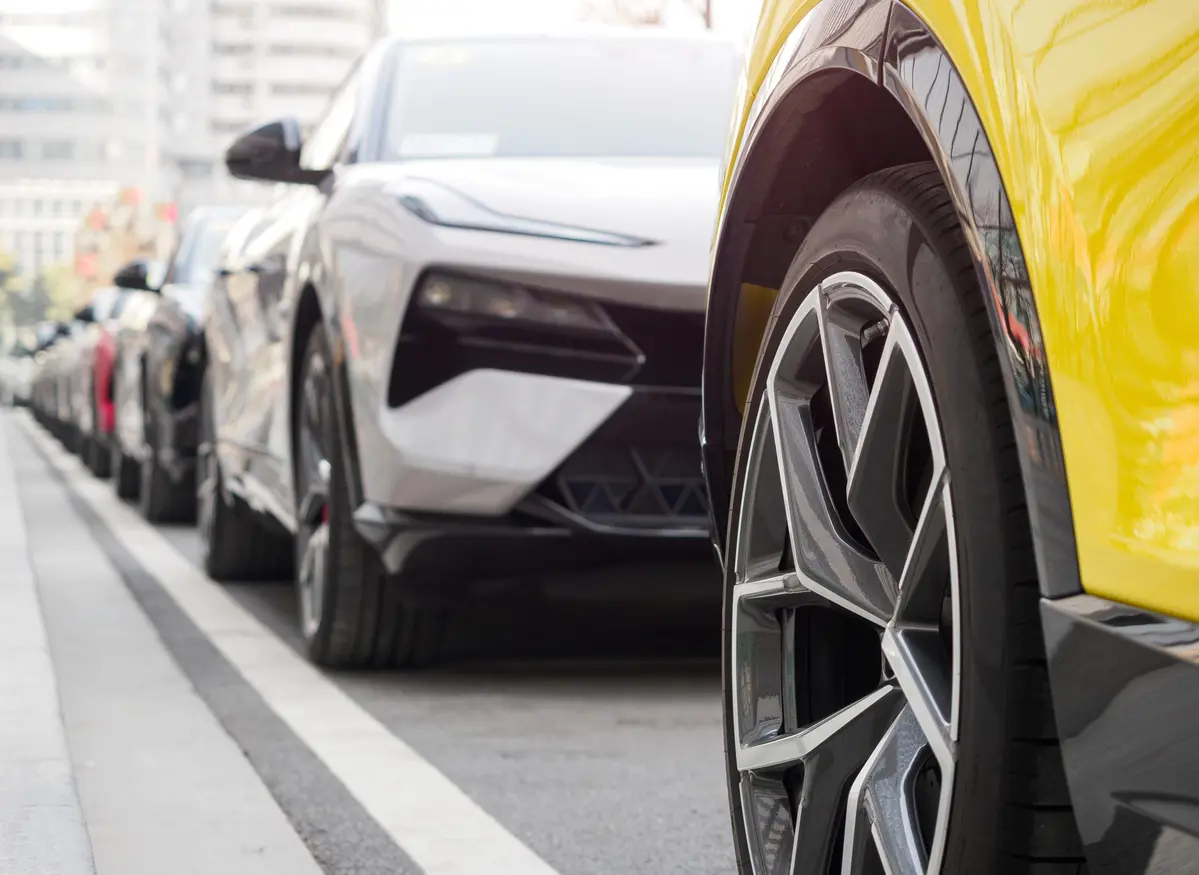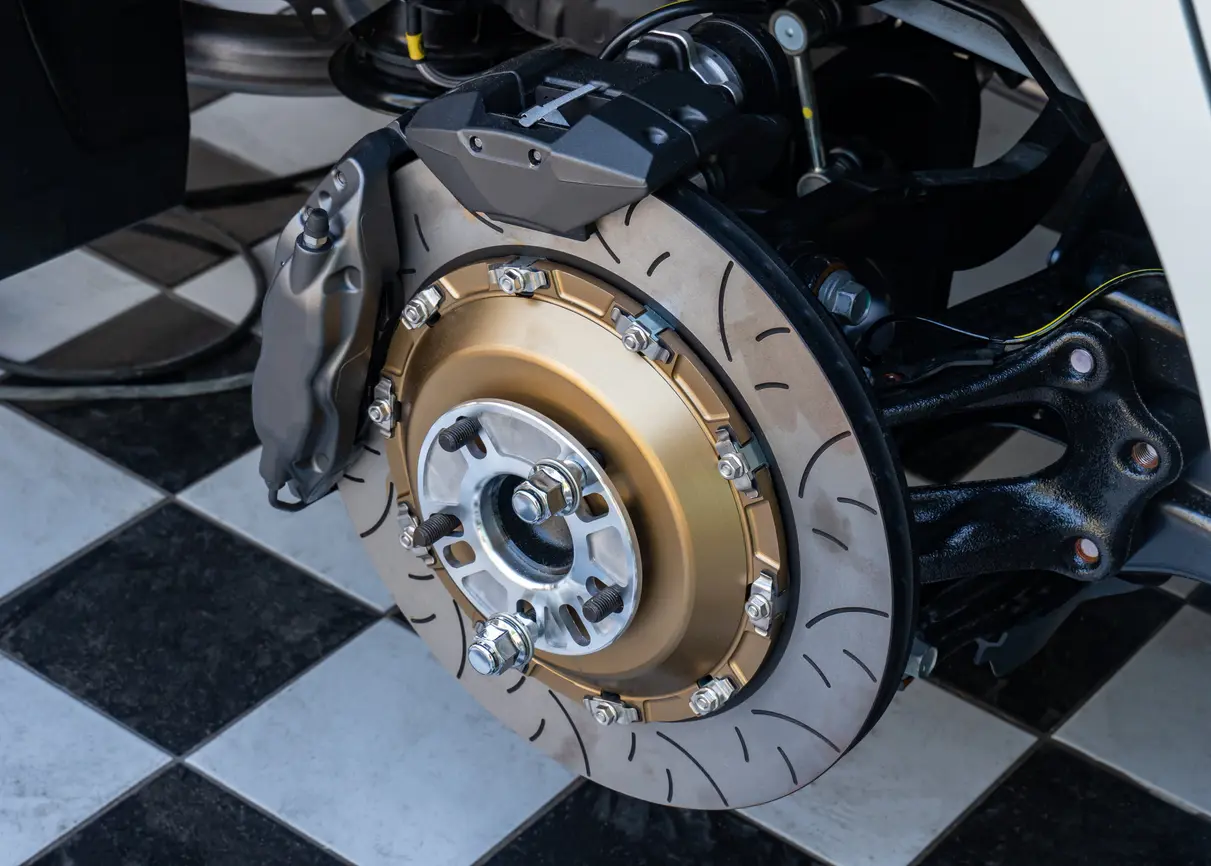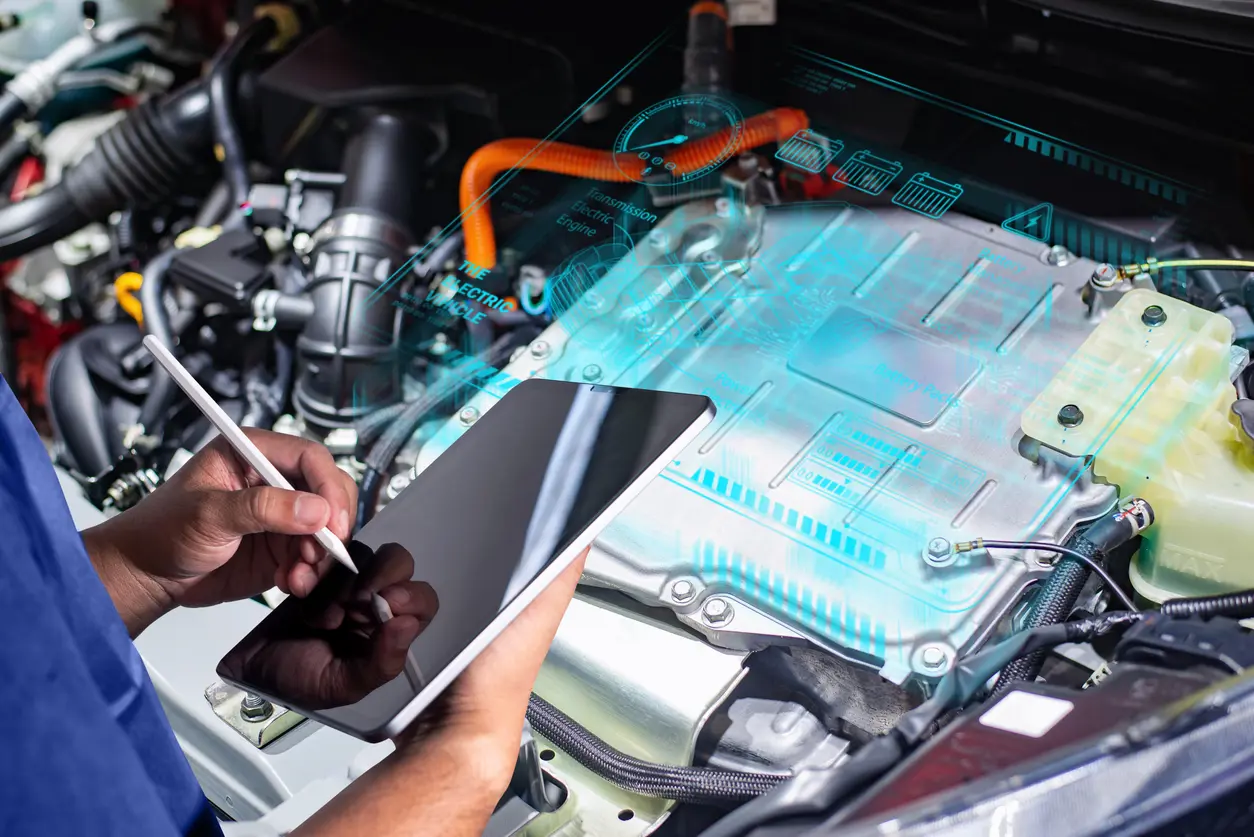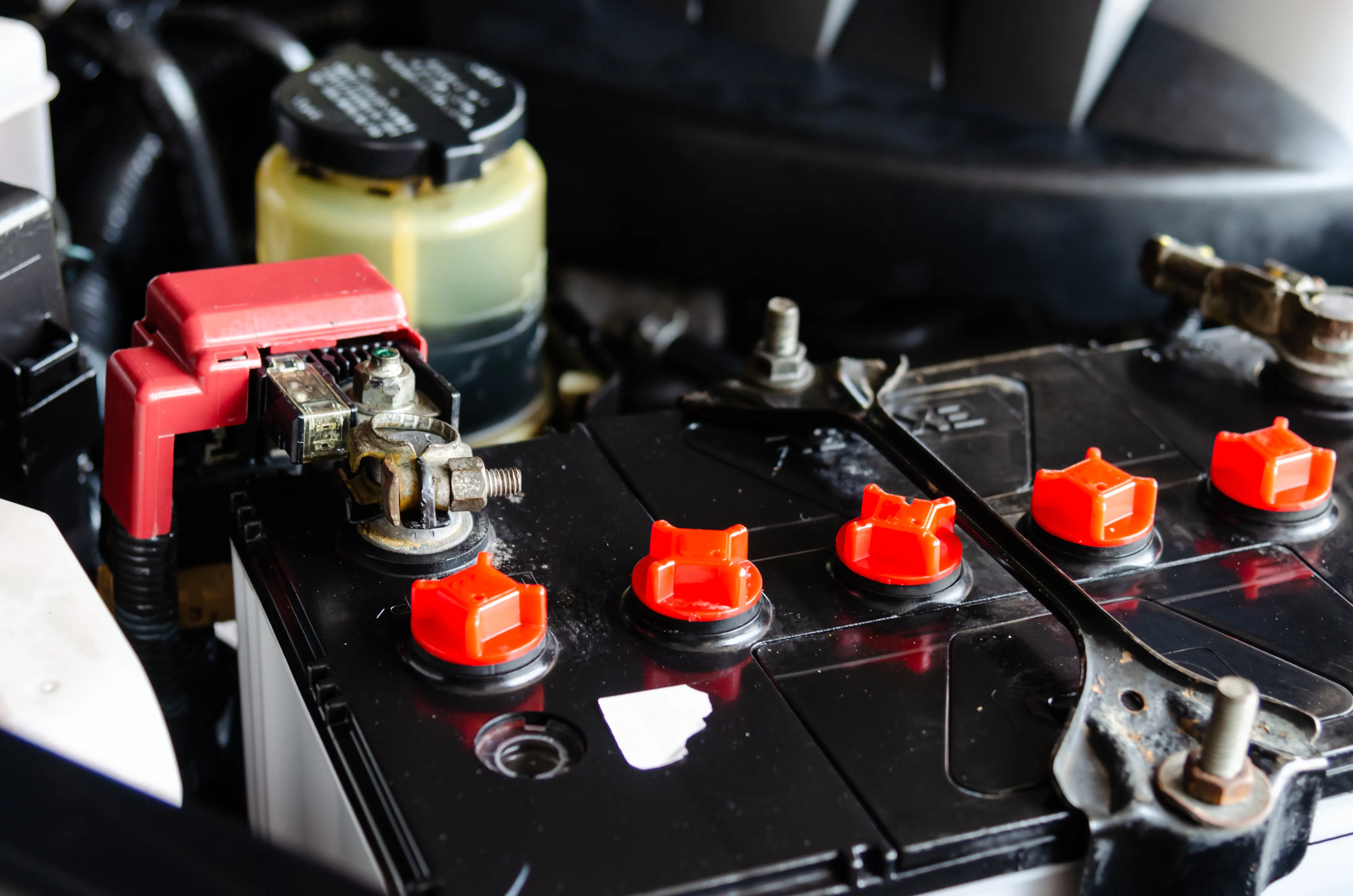Why Do EVs Need an Auxiliary Battery?
The auxiliary battery supports all 12v electrical systems:
- accessory systems
- headlights
- audio systems
- computer controls
The exceptions are the air conditioning and heating systems.
An auxiliary battery can also be used as a safety backup to support the main battery when required or to provide constant voltage for specific vehicle systems. Many vehicles with Start/Stop and ADAS (Advanced Driver-Assistance Systems) systems may also use an auxiliary battery alongside the main vehicle starter battery.
How Auxiliary Batteries Are Charged
Instead of using an alternator to charge the auxiliary battery like gas-powered vehicles do, auxiliary batteries in HEVs and EVs are recharged by the HV battery using an inverter/converter.
Batteries in gas-powered vehicles are charged via the engine and alternator. The main battery in an EV is charged via its charging cord and regenerative braking.
So, are auxiliary batteries in EVs and HEVs charged the same way? (Through the gas-powered motor for HEVs and charging cable/regenerative braking for EVs?)
No. Because auxiliary batteries in an EV run on a lower voltage, they can’t take energy directly from a high-voltage battery. That’s where a DC/DC converter enters the picture. (That’s not a typo of AC/DC converter.)
A DC/DC (or DC-to-DC) converter changes the voltage from one level to another, so from the high-voltage main battery to the low-voltage auxiliary battery. You’ll find it in both EVs and HEVs. This component does not exist in ICE vehicles.
12-Volt Auxiliary Battery Types
Often when we think of battery types, our first associations circle around batteries in our small devices, from AAA to D. (Remember those boomboxes that needed four D batteries? They must’ve doubled the weight of those electronics.)
Batteries are separated differently in the automotive industry, typically lead-acid and lithium-ion. The main battery in an EV is lithium-ion. However, the auxiliary batter is a lead-acid one.
Most auxiliary 12v systems use an absorbent glass mat (AGM) battery, a type of valve regulated lead-acid (VRLA) battery.
VRLA batteries are lead-acid rechargeable batteries. Unlike conventional lead-acid car batteries, they are fully sealed, i.e., they will not spill. Moreover, their construction makes them maintenance-free because their liquids never need topping up, also unlike conventional batteries.
The AGM battery uses thin fibreglass mats (hence the name) to store the battery acid. This construction provides powerful performance and durability and also does not require the fluids to be topped up.
You can find your EV’s auxiliary battery almost anywhere in the vehicle. Common locations include:
- in the trunk
- under the rear hatch floor
- under a seat
- in the engine compartment
- under the floorboard
Because the 12v battery is not used to crank the engine and typically only provides electricity to electronics and accessories, it has a very low energy capacity. Because of this low capacity, the battery will discharge quickly if there is a fault associated with the battery’s recharging function.
Servicing the Auxiliary Battery
An auxiliary battery malfunction can cause performance issues with the vehicle’s electrical systems. These include the entertainment system, GPS, Blind Spot Assist, Lane Keeping Assist, and Start/Stop functionality.
If the control system identifies a fault in the auxiliary battery system, you may see an error message displayed in the instrument cluster or vehicle information centre. Any time a fault is detected, a diagnostic trouble code (DTC) is recorded. Your service technician will have a device to read this information.
However, you may be able to handle some service procedures on your own.
For example, if the small battery symbol appears or you see the message “Stop Vehicle Leave Engine Running” (not available on all vehicles), this means the auxiliary battery state of charge (SOC) is below the threshold, and the HV system will try to power it up.
If you need to access the auxiliary battery to jump-start it, don’t look for the battery itself like you would in an ICE vehicle. Instead, search for battery jump studs under the engine hood to connect a charger or jumper cables to. Refer to your owner’s manual for details and keep in mind that not all auxiliary batteries can be safely jump-started at home.
If you feel unsure about the condition of your auxiliary battery or these DIY service tips, drop by your nearest NexDrive service centre. One of our technicians there will be happy to help you.
Other Resources

Why do electric car tires wear out so fast?
EV tires experience increased tread wear because of instant torque and unsprung weight. Learn why electric vehicles lead to worn-out tires and how to extend the lifespan of EV tires with proper maintenance.

Why regenerative braking is bad for your brake pads
Regenerative braking improves energy efficiency, but can cause brake pad issues because of reduced mechanical brake use. Learn how to maintain your brake system and prevent costly repairs in this article.

Does an EV need regular general maintenance?
Although EVs require less maintenance than gas-powered vehicles, they still need regular care. Learn about battery health, brake maintenance, and more here.
